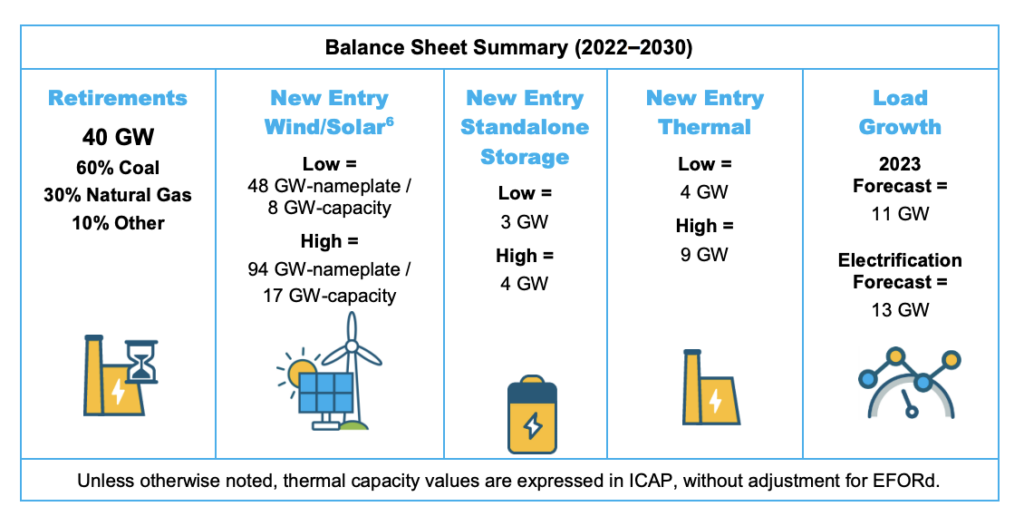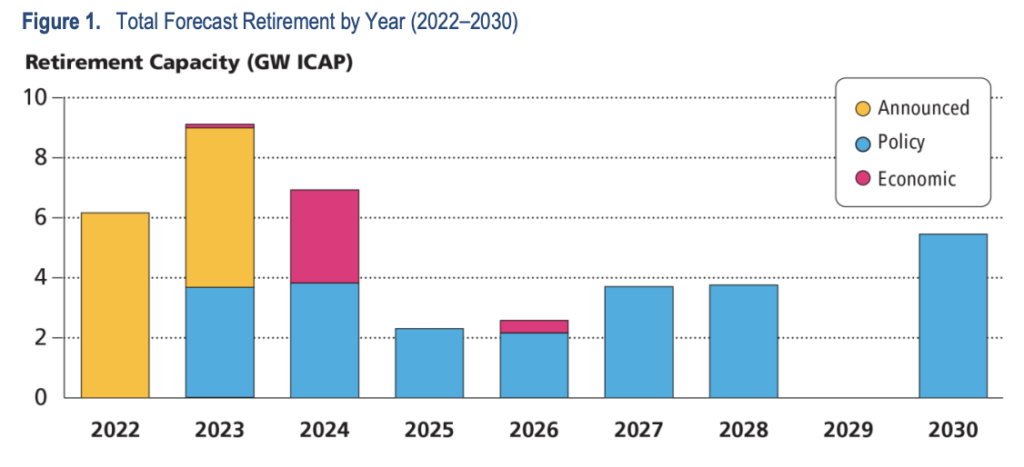PJM Interconnection, the largest power grid operator in the US, has warned that it could face a dire shortfall in electric generating capacity in the coming years.
The grid operator has predicted that almost 40 GW of its generating capacity will retire by 2030, which amounts to 21% of the service area’s total capacity. Moreover, 90% of the planned retirements will be from coal and natural gas. PJM provides electricity to over 65 million customers across states between northern Illinois and the Atlantic coast, including New Jersey, Ohio, and Pennsylvania.
In contrast, PJM said that it will increase generating capacity by about only 30 GW come 2030, with its “low entry” scenario projecting just 15 GW of additions over the same period. The neighboring Midcontinent Independent System Operator and other grid operators face similar potential capacity shortfalls, with retirements of traditional generation sources outpacing the addition of new sources.

However, regulators at the North American Electric Reliability Corporation have warned against retiring fossil fuel-powered generation sources too fast, as this could lead to major electricity shortages and even more blackouts during extreme weather conditions such as heatwaves. The report pointed to the inevitable power crisis as the doing of government polices such as stringent compliance with EPA regulations ESG commitments.

The Biden administration and some investors have also increased pressure on utilities to phase out fossil fuels to achieve 100% carbon-free electricity by 2035. The Inflation Reduction Act is dishing out generous subsidies for wind and solar energy; however, the PJM report points out that the “historical rate of completion for renewable projects has been approximately 5%.” So, optimistically, there will be about 21,000 MW of solar, wind, and battery storage added to the electrical grid before 2030— recovering about only about 50% of the electricity lost due to the fossil fuel-powered electricity retirement.
At the same time, though, electricity demand is expected to increase, thanks to the rapid addition of data centers, and the push towards electrified vehicles.
Information for this briefing was found via PJM and the sources mentioned. The author has no securities or affiliations related to this organization. Not a recommendation to buy or sell. Always do additional research and consult a professional before purchasing a security. The author holds no licenses.






